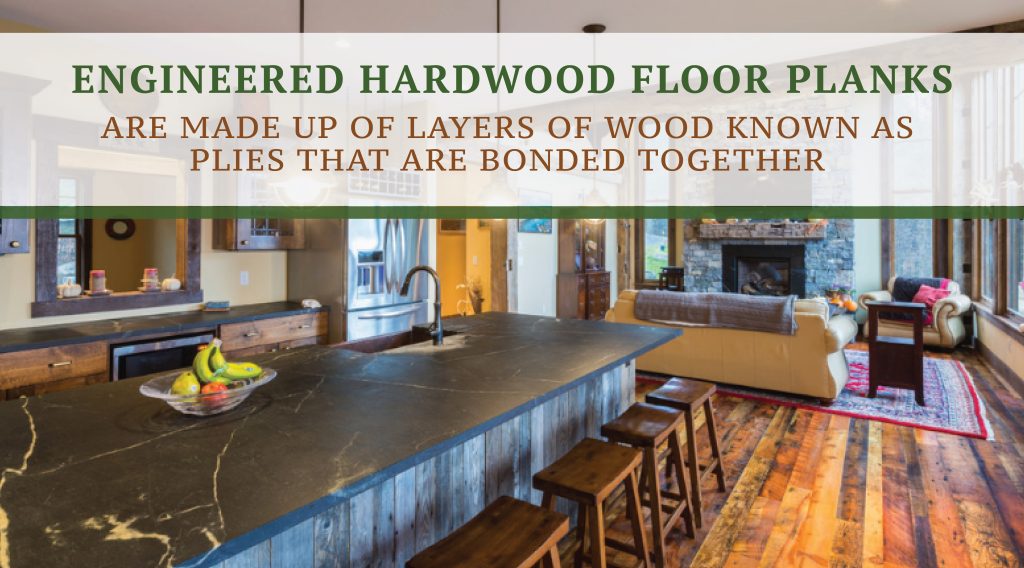
Engineered wood flooring has rapidly gained popularity as a stylish and practical choice for homeowners. Are you tired of dealing with the high cost and maintenance of solid hardwood? Or perhaps you’re looking for a flooring solution that’s both environmentally friendly and incredibly durable? Engineered wood flooring offers an excellent alternative, combining the beauty of natural wood with enhanced performance characteristics. This thorough guide will explore the numerous benefits of engineered wood flooring, helping you determine if it’s the right choice for your home. We’ll cover everything from its cost-efficacy and sustainability to its installation and maintenance, providing you with the information you need to make an informed decision. Let’s dive in!
The Allure of Engineered Wood Flooring
Understanding Engineered Wood
Engineered wood flooring consists of multiple layers of wood bonded together. The top layer, known as the veneer or wear layer, is made of a high-quality hardwood, offering the beauty and aesthetic appeal of traditional hardwood floors. Beneath this is a core made of plywood or high-density fiberboard (HDF), providing stability and strength. This multi-layered construction is what sets engineered wood apart, offering several key benefits over solid hardwood. The core layer helps prevent warping and expansion, making it suitable for various climates and subfloors. Engineered wood is far more dimensionally stable, less prone to cupping, and is generally less expensive than solid hardwood. Many homeowners and interior designers see engineered wood as the perfect combination of style and practicality. This multi-layered structure makes it resistant to moisture fluctuations, a significant benefit in basements or areas with high humidity.
Cost-efficacy: A Smart Investment
One of the most compelling reasons to select engineered wood flooring is its affordability. Compared to solid hardwood, engineered wood often comes with a lower price tag. This doesn’t mean a compromise on quality. The use of plywood or HDF in the core layer allows manufacturers to reduce material costs without sacrificing the beauty of the hardwood veneer. This makes it a more accessible choice for homeowners on a budget, allowing them to enjoy the elegance of wood flooring without breaking the bank. Budget-conscious homeowners can appreciate the significant savings and the return on investment this material represents.
Environmental Considerations: Sustainable Choice
Many engineered wood flooring options are sourced from sustainably managed forests, using wood from responsible forestry practices. The use of fast-growing wood species in the core layers reduces the pressure on old-growth forests, minimizing the environmental impact of flooring production. Additionally, the manufacturing process of engineered wood flooring often outcomes in less waste than solid hardwood production. Choosing this flooring means making an environmentally responsible choice without compromising on style or quality. This aligns with the growing trend toward sustainable home improvements. The ability to select reclaimed wood for certain engineered flooring models also contributes to these values.
Related Post : The Best Flooring Choices for Open-Concept Spaces
Installation: Ease and Efficiency
Engineered wood flooring is known for its ease of installation. The smaller planks and superior dimensional stability allow for quicker installation, potentially saving you time and labor costs. It is often a suitable DIY project for those with basic home improvement skills. This benefit is particularly beneficial for homeowners undertaking renovations themselves or seeking a faster turnaround time. Plus, the installation flexibility allows for it to be installed over many subfloors, making it a great option for remodeling projects.
Durability and Longevity: A Long-lasting Investment
Resistance to Moisture and Temperature Fluctuations
The layered construction of engineered wood flooring gives it superior resistance to moisture and temperature changes, unlike solid hardwood, which is much more susceptible to warping or expansion. This resilience makes it ideal for areas prone to humidity, like basements or bathrooms, or regions with significant temperature swings throughout the year. Unlike solid hardwood, engineered wood can hold up exceptionally well without major damage in these situations.
Scratch and Dent Resistance: Protecting Your Investment
The hardwood veneer layer offers excellent protection against scratches and dents. This durability is especially crucial in high-traffic areas of the home, such as hallways, living rooms, and kitchens. This resistance also extends to the wear and tear of pets and children, making it a practical choice for families.
Longevity and Maintenance: Easy Care
With proper care and maintenance, engineered wood flooring can last for decades. Its durability ensures that it can withstand the daily wear and tear of a busy household, maintaining its beauty and value over time. Regular sweeping or vacuuming, along with occasional damp mopping, are sufficient to keep the floor clean and looking its optimal. Engineered wood flooring stands up exceptionally well to the challenges of everyday life.
Variety of Finishes and Styles: Endless Possibilities
Engineered wood flooring comes in a vast array of styles and finishes to suit any décor. From traditional to contemporary, there’s an option to match any taste or style preference. The choice is wide-ranging and allows for endless design possibilities. You can select from various wood species, colors, and textures to create the desired look and feel for your home.
Choosing the Right Engineered Wood Flooring
Understanding the Wear Layer: A Key Factor
The thickness of the hardwood veneer, or wear layer, is a crucial factor determining the longevity and durability of the engineered wood flooring. A thicker wear layer (typically 3mm or more) is more resistant to scratches and dents and offers a longer lifespan. This means a longer period of time before the floor needs sanding or replacing. Choosing a model with a thicker wear layer is a worthwhile investment for durability.
Considering Wood Species and Finishes: Making the Right Choice
varied wood species offer varying degrees of hardness, durability, and aesthetic appeal. Harder woods like oak and maple are more resistant to scratches and dents, while softer woods like cherry or pine offer a varied aesthetic charm. Finishes such as polyurethane or aluminum oxide offer protection against moisture and wear, increasing the longevity of the floor. varied wood species offer a wide scope of colors and grains, allowing you to select a floor that perfectly complements your existing home decor.
Assessing Subfloor Condition: Ensuring Proper Installation
Before installation, it’s essential to assess the condition of your subfloor. Engineered wood flooring requires a level and stable subfloor to ensure proper installation and prevent problems down the road. Repairing any unevenness or damage to the subfloor before installation is crucial to avoid future issues. Investing in proper preparation now will prevent potential problems in the long run.
Considering Underlayment: Enhancing Comfort and Soundproofing
An underlayment is often used beneath engineered wood flooring, providing several benefits. It can enhance sound insulation, reducing noise transfer between floors, and it can improve comfort by adding cushioning underfoot. Some underlayments also offer moisture protection, acting as an additional barrier against moisture damage. The right underlayment can improve the functionality and longevity of the floor.
Engineered Wood Flooring vs. Solid Hardwood: A Detailed Comparison
Cost Comparison: Engineered Wood’s Affordability
Engineered wood flooring generally costs less than solid hardwood, making it a more accessible option for budget-conscious homeowners. The use of less expensive materials in the core layers allows for lower manufacturing costs, outcomeing in lower prices for consumers. This significant cost difference can be a deciding factor for many homeowners.
Durability and Stability: Engineered Wood’s Superiority
Engineered wood offers enhanced stability, making it less prone to warping, cupping, and expansion compared to solid hardwood. This improved stability is especially beneficial in areas with fluctuating humidity or temperature. This is because of the multiple layers providing stability and resistance to moisture and temperature fluctuations.
Installation: Ease and Speed of Engineered Wood
Installing engineered wood is often quicker and easier than installing solid hardwood. The smaller planks and improved stability allow for faster installation, potentially saving time and labor costs. This ease of installation can be a major benefit for homeowners undertaking DIY projects.
Versatility and Applications: Engineered Wood’s Adaptability
Engineered wood is highly versatile and can be installed in various applications, including basements, bathrooms, and areas with high humidity, whereas solid hardwood is more restricted to dry, stable environments. Its adaptability makes it suitable for use in a wider scope of locations within the home. This adaptability significantly boosts the scope of possible applications.
Maintenance and Care: Keeping Your Floors Looking Their optimal
Regular Cleaning: Simple Steps for Long-lasting Beauty
Regular sweeping or vacuuming is essential to remove dirt and debris, preventing scratches and maintaining the floor’s appearance. Damp mopping with a specialized wood floor cleaner should be done occasionally to remove any sticky spills or stains. Avoid excessive moisture to prevent damage.
Addressing Scratches and Dents: Minor Repairs and Maintenance
Minor scratches and dents can usually be repaired with wood filler or touch-up pens designed for engineered wood flooring. More significant damage may require professional repair or replacement. Using felt pads under furniture is a great method of preventative maintenance.
Protecting Your Investment: Preventative Measures
Using protective mats or rugs in high-traffic areas can help prevent scratches and wear. Keeping furniture feet capped with protective felt pads helps avoid damage to the floor. Preventing moisture damage is crucial as well. Regular maintenance will ensure the longevity of your flooring.
Professional Care: When to Call a Specialist
For significant damage or if you’re unsure about any repair, it’s optimal to consult a professional flooring specialist. Professionals have the expertise and tools to properly repair or replace damaged sections. They can offer expert advice on maintenance and repair.
In conclusion, choosing engineered wood flooring offers a compelling blend of beauty, durability, and practicality. Its affordability, sustainability attributes, and ease of installation make it a smart investment for any homeowner. Don’t hesitate to explore the vast array of styles and finishes available to find the perfect engineered wood flooring to transform your space. Contact a flooring specialist today to discuss your project and discover the benefits of engineered wood flooring firsthand.
